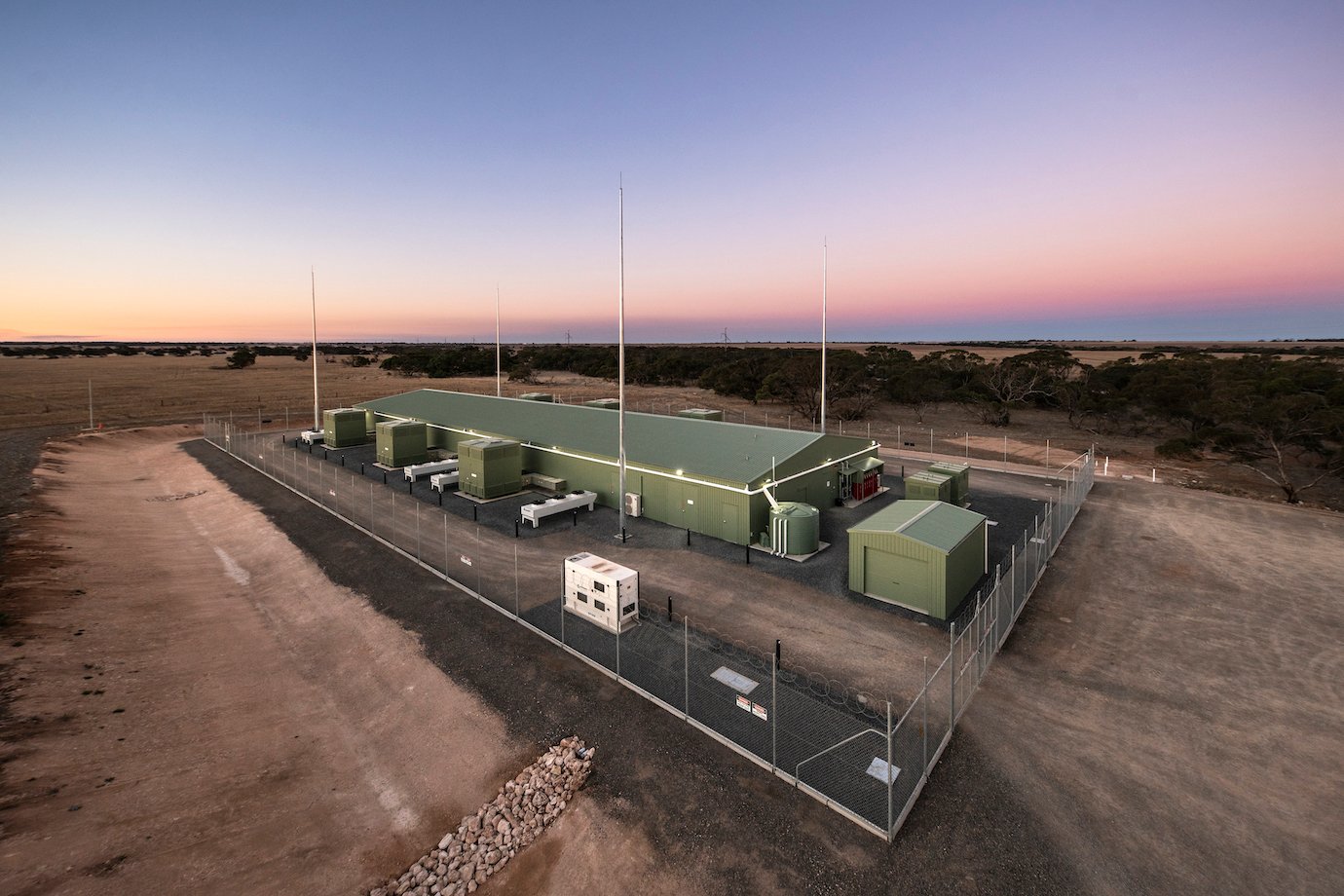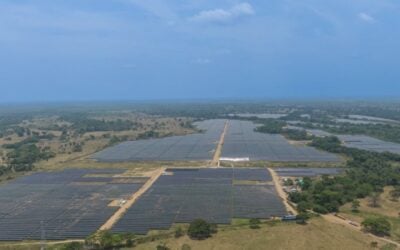
Hitachi ABB Power Grids has signed a collaboration agreement on battery energy storage for renewable energy projects in the Americas, with Atlas Renewable Energy.
The pair will jointly develop and deploy utility-scale battery energy storage systems (BESS) for Atlas’ renewable energy projects. Atlas Renewable Energy is a developer, builder, financier and operator of clean energy projects in Latin America, with solar projects operating or under development in Chile and Brazil among those reported on recently by our sister site PV Tech.
Enjoy 12 months of exclusive analysis
- Regular insight and analysis of the industry’s biggest developments
- In-depth interviews with the industry’s leading figures
- Annual digital subscription to the PV Tech Power journal
- Discounts on Solar Media’s portfolio of events, in-person and virtual
Battery storage is among a broad suite of technologies offered for transmission and distribution grid operators by Hitachi ABB Power Grids, in which Hitachi took its ownership stake up to just over 80% last year. Energy-Storage.news has reported on recently-won contracts for projects in Southeast Asia for the company, which produces its own branded energy storage system, Power Store, as well as e-mesh, the company’s proprietary digital controls systems and software.
Through the partnership, Hitachi ABB and Atlas will integrate energy storage systems into the design of early development stage projects, with Hitachi ABB providing input on the appropriate technical solutions as well as interconnection, and has also been invited to participate in Atlas’ tenders to engineer the projects.
Fabian Gonzalez, director of innovation and operational efficiency at Atlas Renewable Energy said that the pair previously worked together in introducing the first substation in Latin America with digital capabilities at a solar farm.
“Now, we are going a step further into ensuring that all our new projects' design will have the added value of being conceived with the best BESS and interconnection solution,” Gonzalez said.
Including energy storage systems in the planning and design process from the start with Hitachi ABB Power Grids’ “experts in integrated solutions” means that selecting and deploying BESS, which he said is usually “an intricate and highly technical process,” can be done in such a way as to ensure “a more flexible, reliable and efficient battery implementation” for the developer’s fleet of projects, Gonzalez said.
“Our proven technologies have enabled customers to create economic, social and environmental value by unlocking new revenue streams, maximising renewable integration and lowering carbon emissions,” Hitachi ABB Power Grids head of grid edge solutions Maxine Ghavi said.
“As we look toward the future, we anticipate more need for more systems that support renewable smoothing and ancillary grid services,” Ghavi said, adding that Grid Edge Solutions has a global footprint of more than 500MW to date.
South Australia project shows technical and economic success
In related news, a knowledge sharing report on Hitachi ABB Power Grids’ Energy Storage for Commercial Renewable Integration (ESCRI) in South Australia was published this month by ElectraNet, the transmission system operator which hosted the project.
Through the ESCRI project, a 30MW / 8MWh battery energy storage system was deployed and commissioned in 2018, becoming the first transmission grid-connected battery in Australia’s National Electricity Market (NEM). The BESS’s AU$30 million cost was part-funded by the Australian Renewable Energy Agency (ARENA).
Out on the far end of a transmission line in South Australia’s Yorke Peninsula, the BESS serves as Australia’s first-ever virtual synchronous generator, helping to integrate renewable energy onto the network in one of the regions with the highest proportions of wind and solar in its energy mix in the world.
Hitachi ABB Power Grids’ Maxine Ghavi told Energy-Storage.news in an interview last year that the ESCRI project not only integrates the output of a local 91MW wind farm and high numbers of residential solar rooftops through providing inertia — a service which historically has been done by thermal generators — and voltage support, but also demonstrates the capability to stack revenues and value for energy storage systems by performing multiple applications. These included frequency control ancillary services (FCAS) for major utility AGL as well as system services for ElectraNet.
As part of ARENA’s funding agreement with ElectraNet, the transmission provider delivered a knowledge sharing programme. The report ElectraNet produced in March covers the two-year period from 14 December 2018 until the same day last year, during which time the BESS responded to 29 operational system events, the majority of which were single-line trips in the transmission network as well as some frequency events, and instances where the batteries had to supply load to prevent or shorten impacts of shortages in power supply.
The report shows not only that the BESS at Dalrymple responded quickly and accurately to notable major events including a lightning strike, preventing or reducing the duration of impacts on local power supplies, but also provided around AU$22.6 million (US$17.61 million) from FCAS services alone during the two years, more than enough to rapidly repay the AU$12 million funding from ARENA.






